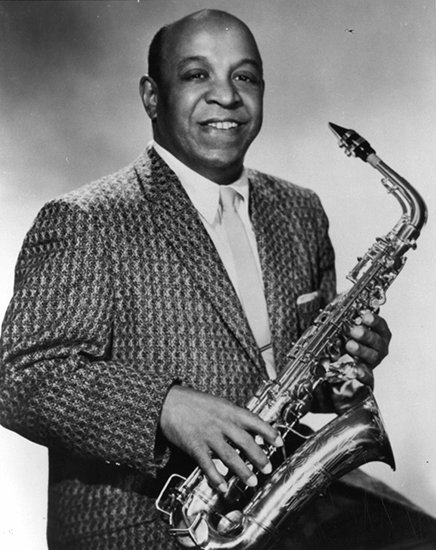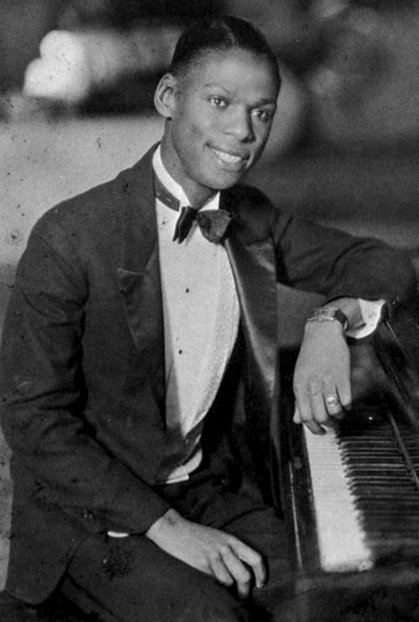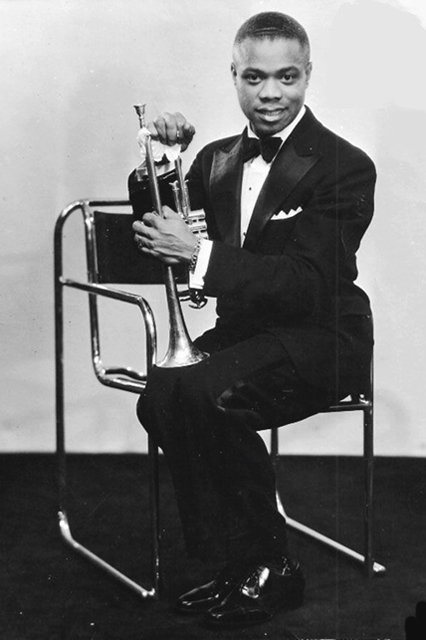West End Blues
Louis Armstrong and His Hot Five: Louis Armstrong (trumpet, vocals) Fred Robinson (trombone), Jimmy Strong (clarinet), Earl Hines (piano), Mancy Carr (banjo) and Zutty Singleton (hand cymbals) (1928).
In 1928 Armstrong founded his second Louis Armstrong and His Hot Five with the following musicians from the Carroll Dickerson Orchestra: Jimmy Strong on clarinet and tenor saxophone, Fred Robinson on trombone, Earl Hines on piano, Mancy Carr on banjo and Zutty Singleton on drums and percussion, and recorded ten sides. The music for this second band was arranged by Don Redman instead of consisting of free improvisations, as in the previous one; and when Redman also joined the group playing the clarinet or alto saxophone, it became the Louis Armstrong and His Savoy Ballroom Five, which recorded six tracks.

Particularly noteworthy is the role of Hines, who assimilating Armstrong’s ideas completed his rhythmic inventiveness and variegated phrasing with a rich harmony, and who years later had a huge influence on the way the piano was played in jazz. These sessions resulted in some of the most important masterpieces of early jazz, like the hits “West End Blues”, whose solo introduction by Armstrong is one of the most important improvisations in jazz history, and “Muggles”, which in music slang was a term for marijuana, something Armstrong smoked often during his life, as well as “Weather Bird”, an Armstrong-Hines duet, “Saint James Infirmary”, “Basin Street Blues” and “Tight Like This”. Please, find all of these pieces below.

Therefore, from late 1925 to late 1928 Armstrong led a double musical life in Chicago: on one side he performed live first with his wife’s band at the Dreamland Cafe and the Erskine Tate orchestra at the Vendome Theater, and then with the latter and Carroll Dickerson’s at The Sunset Cafe; and on the other he recorded with His Hot Five, His Hot Seven and His Savoy Ballroom Five ensembles for Okeh Records. With these recordings he transformed jazz, which until then had been a dance music, into a popular art form intended for listening with a total of sixty-two cuts.



Muggles
Louis Armstrong and His Hot Five: Louis Armstrong (trumpet), Fred Robinson (trombone), Jimmy Strong (clarinet), Earl Hines (piano) and Mancy Carr (banjo) (1928).

Weather Bird
Louis Armstrong (trumpet) and Earl Hines (piano) (1928).

Saint James Infirmary
Louis Armstrong and His Savoy Ballroom Five: Louis Armstrong (trumpet), Fred Robinson (trombone), Jimmy Strong (clarinet), Earl Hines (piano), Mancy Carr (banjo) and Zutty Singleton (drums) (1928).

Basin St. Blues
Louis Armstrong and His Hot Five: Louis Armstrong (trumpet, vocals), Fred Robinson (trombone), Jimmy Strong (clarinet), Earl Hines (celesta, piano), Mancy Carr (banjo) and Zutty Singleton (drums) (1928).

Tight Like This
Louis Armstrong and His Savoy Ballroom Five: Louis Armstrong (trumpet), Fred Robinson (trombone), Don Redman (alto saxophone), Jimmy Strong (clarinet), Earl Hines (piano), Mancy Carr (banjo) and Zutty Singleton (drums) (1928).

Here's an interesting interpretation of basin street blues by experimental Canadian scratch dj, kid koala, fyi if you are interested!